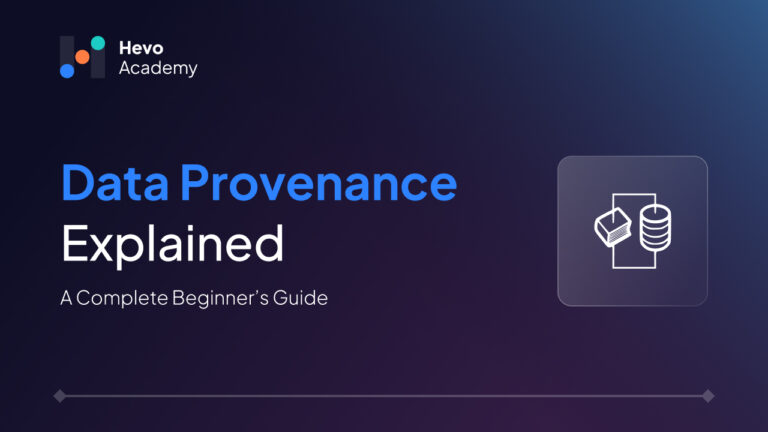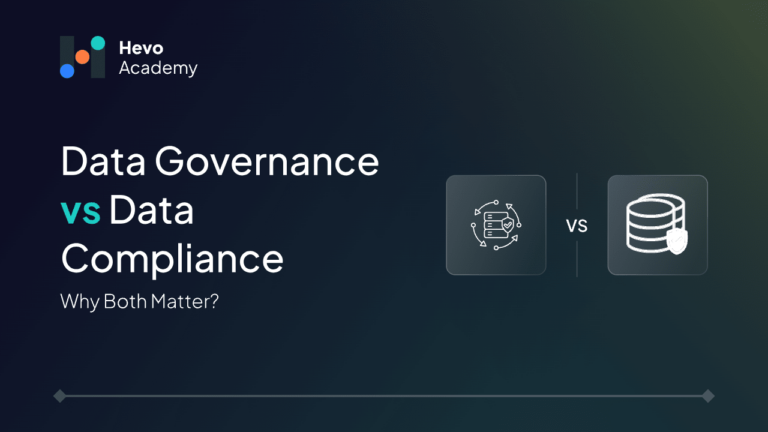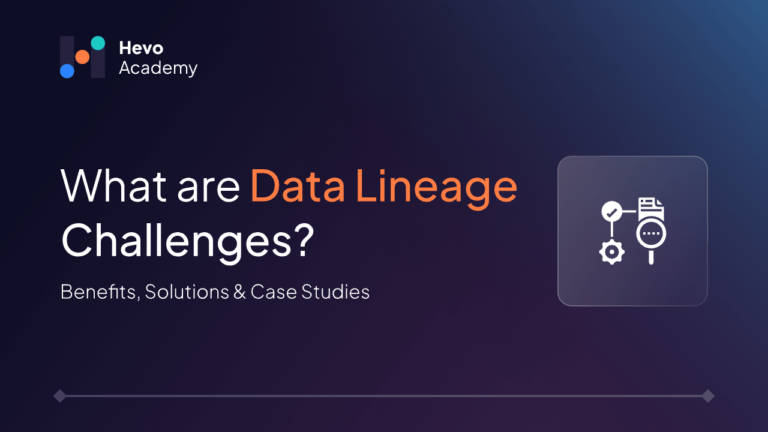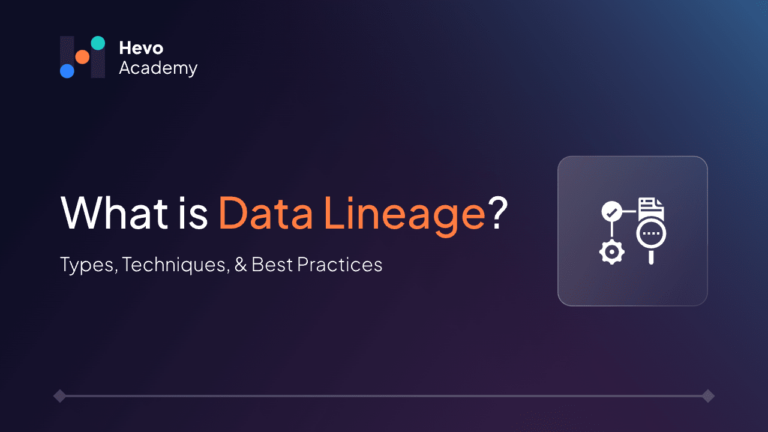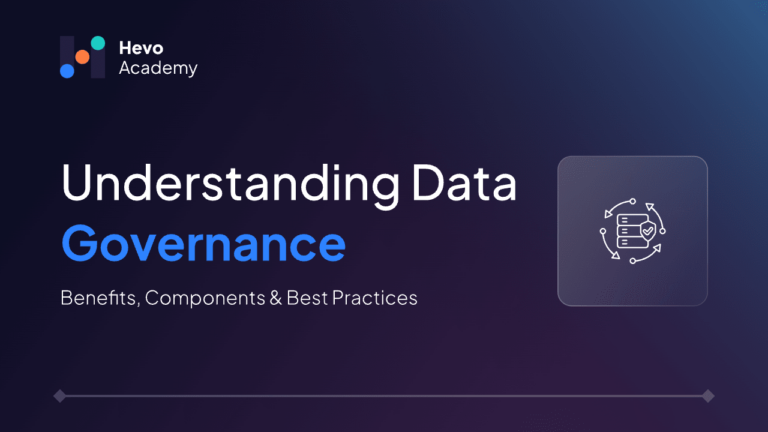Data Provenance is like the “ingredient label” but for your data. It tells you where your data came from, what’s been done to it, and who touched it along the way. Whether you’re building dashboards, training machine learning models, or complying with regulations, understanding data provenance is very crucial.
Table of Contents
In this blog, let us try to understand data provenance in plain English. You’ll learn what it is, why it matters, how it works, and how to start using it.
Let’s dive right in!
What Is Data Provenance?
Data provenance is the record of where your data originated, how it moved, and what transformations it went through along the way. In short, it answers the question:
“Can I trust this data, and do I know how it got here?”
Think of it as the “biography” of your data. Like documenting everything from its birth (source system), to the changes it underwent (transformations), to its current state (in a dashboard, report, or database table).
Why Data Provenance Matters
We live in a world where data drives decisions, from quarterly earnings calls to AI-driven product recommendations. But here’s the thing: data is only as valuable as it is trustworthy. That’s where data provenance becomes a game-changer.
Let’s look at the key reasons why:
- Data provenance gives all the stakeholders but not limited to analysts, engineers, and executives alike, confidence in where data came from, how it was processed, and whether it’s reliable for decision-making.
- Regulations like GDPR, HIPAA, and SOX require data traceability and auditability, and it is all provided by the Data Provenance.
- Without provenance, figuring out what went wrong is like searching for a needle in a haystack. But with provenance, you can trace the problem back to the source or transformation step, fast.
- It supports data reproducibility for any use case like Analytics & ML
Data Provenance vs. Data Lineage vs. Data Governance
If you are too into data, then you might have also heard about Data Lineage and Data Governance. These terms often get mixed up, so let’s clarify:
| Data Provenance | Data Lineage | Data Governance |
| Historical record of data origin and authenticity; tracks who created data, when, and what changes were made | Tracks the full journey and transformations of data from source to current state; maps data flow through systems and processes. | Framework of policies, processes, and standards for managing data quality, security, and compliance across an organization. |
| Verifying authenticity, quality, and reliability of data; detailed audit trail of data’s history and context | Understanding how data moves and changes, the impact of transformations on downstream processes and decisions | Ensuring proper data management, accountability, compliance, and strategic use of data assets. |
| Forms the foundation for understanding data lineage; provenance details feed into lineage tracking. | Builds on provenance by adding the flow and transformation context; essential for governance | Uses insights from both provenance and lineage to enforce policies and manage data lifecycle effectively. |
Components of Data Provenance
Now, let’s break down what it’s actually made of. Whether you’re using a fancy data catalog or just managing things manually, these core components are what make provenance work:
1. Source
This is where the data originates. It could be a database, any third-party API, a CSV upload or Excel sheet or any sensor data or logs. Capturing the original source helps validate the data’s authenticity and trace it whenever issues arise.
2. Transformations
What happened to the data along the way?
This includes:
- Joins, filters, and aggregations
- Type casting or formatting
- Calculated fields or business rules
- Deduplication or cleansing steps
Provenance logs these transformations, ideally with timestamps and scripts or code references (like SQL queries, DBT models, or Python scripts).
3. Destination
Where did the data end up?
This could be a BI dashboard, a production table in your data warehouse, a machine learning model’s training input, a data lake, report, or API endpoint. Knowing where the data lives helps track usage and detect unintended consequences of changes.
4. Metadata: Time, User, and Tool
Every step in the provenance trail should ideally log:
- When it happened (timestamp)
- Who made the change (user, team, or service account)
- What tool or job processed it (e.g., Airflow, DBT, Spark, custom scripts)
This level of context turns your data pipeline into a well-documented system, not a black box.
Together, these components tell the full story of your data, from origin to outcome, with receipts included. This story is what helps analysts, auditors, and data scientists trust and explain their work.
Methods to Capture Data Provenance
So now you’re convinced that data provenance is important, but how do you actually do it? Fortunately, there are several ways to capture and manage provenance, from simple approaches to advanced tools.
1. Manual Logging (Good for Small Teams)
For lightweight projects or early-stage teams, manually capturing provenance in:
- Excel sheets
- Data dictionaries
- Wiki pages or Notion docs
This can indeed be a good starting point. You can start with documenting the following:
- Source system info
- SQL queries used
- Transformation logic
- Team member responsible
This approach is quite easy to start, as no extra tools are needed. However it is prone to human error, and hard to scale.
2. Built-in Tracking in Data Tools
Many modern data tools have native support for tracking provenance. Let us see some examples:
- DBT: Automatically documents your SQL models and their relationships via the dbt docs site.
- Apache Airflow: Logs every task execution with metadata like timestamps and dependencies.
- Spark: Supports lineage tracking through its DAG structure.
3. Metadata Management & Data Catalogs
If you’re dealing with lots of pipelines or departments, you’ll want a dedicated tool to manage metadata and provenance. Some popular options:
- Open-source: Marquez, Amundsen, Apache Atlas
- Enterprise: Collibra, Alation, Microsoft Purview
These tools often provide:
- Lineage visualization
- Dataset version history
- Access control logs
- Column-level data tracking
Challenges in Managing Data Provenance
While data provenance sounds like a no-brainer, actually implementing and maintaining it can be tricky, especially at scale. Here are some common challenges you’ll likely encounter:
1. Data Silos and Fragmentation
Most organizations have data scattered across systems, cloud warehouses, APIs, legacy databases, spreadsheets, etc. Stitching together a coherent provenance trail across all these tools is like assembling a puzzle with missing pieces.
To address this, start small, focus on key pipelines, and expand as you build standards and tooling.
2. Lack of Standardization
There’s no universal “provenance format,” and every team might log metadata differently. This inconsistent logging makes it hard to trace data accurately or automate lineage visualization.
To address this you can establish internal conventions (e.g., always tag jobs with source, owner, timestamp), or adopt open standards like OpenLineage.
3. Cost and Tooling Overhead
Enterprise-grade data catalogs and observability tools can be pricey and require effort to integrate. Teams may struggle to justify the ROI, especially if issues haven’t burned them yet.
In such cases you can just start with open-source tools or use built-in features from dbt, Airflow, or your warehouse. Prove the value before scaling.
4. Keeping Provenance Updated
Just like stale documentation, outdated provenance is equally dangerous. It gives a false sense of security. Pipelines evolve, but provenance tracking doesn’t always keep up.
Automation is the key. Apply automation processes as much as possible, use CI/CD, metadata APIs, and pipeline monitoring tools to stay current.
Conclusion
Data provenance isn’t just about tracking where your data came from. It’s about building trust, ensuring transparency, and making data-driven decisions with confidence. Whether you’re debugging a broken dashboard, complying with regulations, or trying to understand how your data evolved, a solid provenance strategy is essential. By adopting the right tools, automating metadata capture, and fostering a provenance-first culture, even small teams can unlock massive value. As data ecosystems grow in complexity, data provenance will be the backbone that keeps everything trustworthy, traceable, and auditable.
Frequently Asked Questions (FAQs) on data provenance
1. What is data provenance in simple terms?
Data provenance is the record of where your data comes from, how it’s changed over time, and who has touched it.
2. How is data provenance different from data lineage?
Lineage focuses on how data flows from source to destination. Provenance includes lineage but goes deeper.
3. Why is data provenance important?
It helps with debugging, compliance, data quality, reproducibility, and building trust in your data.
4. How do I keep my data provenance up to date?
Automate it! Use metadata APIs, CI/CD workflows, and tools like dbt or Airflow that automatically track execution and dependencies.

